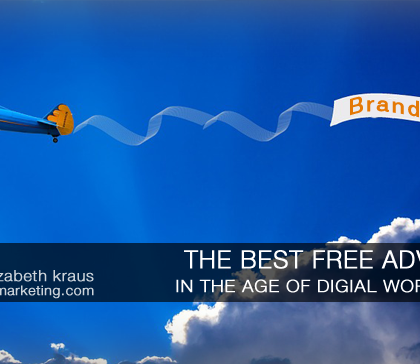The Changing Face-to-Face of Word of Mouth Marketing
Marketing reports tell the tale. While face-to-face referrals still top other types of word of mouth marketing referrals, social media word of mouth may soon oust it from the top spot.
Word of mouth marketing occurs all the time. Any time one person tells another person about a positive or negative aspect of a brand or a brand’s product or service, from the merest mention to an in-depth description, it’s happening.
As a marketing tactic, positive word of mouth is arguably the most valuable and powerful form of marketing since it’s an unpaid endorsement from one person to another, usually from someone who has firsthand experience. Willing to put their own reputation on the line as an expert about the brand or its products or services, they recommend that someone else use it, often with subconscious desire to be seen by the other party as reliable, influential or even authoritative.
Word of Mouth Marketing Stats Prove the Point
- 92% of consumers would take the word of friends and family over all other forms of advertising (Nielsen data via Forbes.com)
- 74% of consumers consider referrals and recommendations in purchasing decisions (Adweek.com)
- 68% trust online opinions from other consumers (even if they don’t know them) (Nielsen)
- 72% say reading positive customer reviews increases their trust in a brand with as few as 2 positive impressions (BrightLocal.com)
It seems fairly obvious that coming up with effective referral marketing strategies should be a top priority for marketers. Online or off, personal recommendations can turn skeptical browsers into confident buyers. But the same Forbes.com article cited above said that while 64 percent of marketers believe word of mouth is the most effective form of marketing, a mere 6 percent said they had mastered it.
The Disappearing Downside of Word of Mouth Marketing
If there has been one downside of referral marketing, it was the inherently limited speed at which it traveled: One to one, person to person. At least that used to be its downside. Now, brand advocates have the ability to communicate positive things about a brand or brand products or services to dozens – or hundreds – or thousands of people at the touch of a button or just a few clicks.
Despite the fact that consumers of all generations have embraced technology for shopping, face to face word of mouth marketing remains the most popular and influential channel for word of mouth. But a closer look at the changing ‘face’ of word of mouth marketing across generations reveals significant growth by social media as a close second, and suggests that social media word of mouth may one day overtake face to face as the most common form of word of mouth marketing.
The Changing Face-to-Face of Word of Mouth Marketing
In June 2012, marketingcharts.com published Brightlocal data which listed ‘word of mouth’ as the most popular source of local business recommendations at 77 percent, with Facebook and Twitter trailing far behind at 32 percent and 9 percent, respectively. Fast forward to August 2015, where marketingcharts.com shares CrowdTwist study findings about Gen X and Millennial consumers where face to face word of mouth comes in as the most popular form of word of mouth marketing, but at just over 50 percent, with Gen Xers and Millennials listing social media as a close second at 42 percent and 43.5 percent, respectively.
Curious as to whether this data holds up across other generations of consumers, we pulled the three 2015 CrowdTwist Loyalty Program Reports that have been published so far to compare findings for not only Millennials and Gen Xers, but Baby Boomers as well. Here’s what we found.

Face to face marketing recommendations rule among all three consumer generations. While you might assume that it would be most prevalent among Baby Boomers, more Millennials actually prefer face to face recommendations than either Baby Boomers or Gen Xers:
- 50% – Baby Boomers
- 52% – Gen X
- 53% – Millennials
Email recommendations come in as the second most popular word of mouth marketing channel only for Millennials, while social media comes in as the second most often used source of recommendations among both Baby Boomers and Gen Xers. Perhaps not surprising, texting made the list, and while it comes in as the 4th most popular source of marketing recommendations among Baby Boomers and Gen Xers, it comes in well ahead of social media, in the 3rd spot for Millennials.
Word of Mouth Marketing Takeaways for Marketers
If only 6 percent of marketers say they have mastered word of mouth marketing strategies, it stands to reason that very few brands have even defined formal word of mouth marketing strategies, let alone identified tactics that will work. Brands that find ways to foster word of mouth recommendations in ways that seem organic and do not undermine perceived objectivity stand to win the word of mouth marketing game.
You might also like: The Shelf Life of Word of Mouth Marketing Reviews







